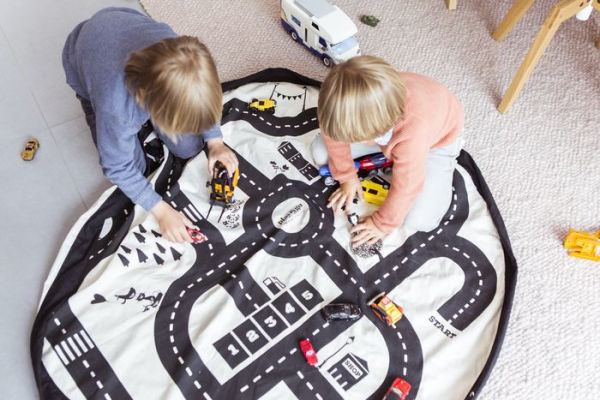

Russian Cathedral Wooden Building Blocks
Details
A Study of Russian Architecture in its Cathedrals!
The Russian Empire was immense and culturally diverse. Her architecture drew upon peoples of different regions and religions. This wooden building blocks set combines many of the domes and arches that Russian czars and religious leaders used when constructing buildings in cities like Moscow and St. Petersburg.
Now you can bring a little bit of Russian culture and history into your play room. Your child learns as the architect! With blocks sets like these, your child can unlock new parts of their imagination, while teaching them about other cultures and countries.
ECO-FRIENDLY TOY
SIZE: 55 pieces in 16 shapes and measures 13.3" x 6.9" x 4,9"
AGE RANGE: 5 years +



WARNING: Small parts, not for children under 3 years
Developmental Value
Why do so many classrooms have a large set of wooden building blocks? Because blocks are one of the most flexible toys that provide learning for underlying fundamental brain power. Many consider them to be the first toy for STEM learning.
When considering a build of any sort, children initiate planning and problem-solving skills. Problem-solving activity develops cross-brain thinking skills. Effective problem solving requires a mixture of both logic (left-brain activity) and creative (right-brain activity) thinking. Good problem solvers switch from one set of skills to the other. Switching is not always easy but becomes easier with problem-solving practice.
-
Logic (analytic) thinking develops through ordering the pieces, comparing them, contrasting them, evaluating them and selecting the correct part. The child must choose the best alternative from the options available by narrowing down the range of possibilities.
-
Creative thinking is developed when a piece doesn't fit because the child must consider a broader set of solving options such as manipulating the part, flipping the piece, finding the alphabet order, or solving surrounding pieces.
When considering a building challenge, children draw on imagination or mental image forming in the mind. Working with friends, a child may build something another child imagines, helping create something he never considered.
There are strong mathematical fundamentals at play such as length, measurement, comparison, number, estimation, symmetry, spatial reasoning, and balance.
There are science and engineering fundamentals at play when children test hypotheses and build scientific reasoning in construction.
Social skills are bolstered as children learn to share materials, develop new friendships, take turns, stay focused, cooperate with others, all leading to the development of self-esteem.
Manufacturer
HABA is a family-owned German firm making children's toys for over 75 years. The design team at HABA is committed to safety, sustainability, and quality. They develop over 250 new ideas each year. They focus on natural toys with maple and beech wood as a central focus.
HABA has received numerous awards and recognitions each year in its product collection. Over time, they have been recognized by at least 45 industry, governmental and parenting organizations. These blocks are made in Germany of reforested, solid natural, untreated beech wood. Over 75 years old, Haba, a German firm, remains a family owned and operated company with a deep commitment to child safety and development.


